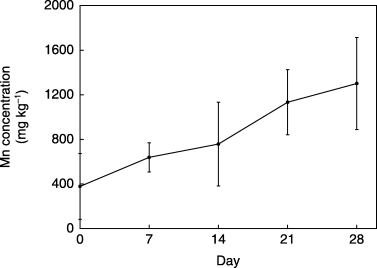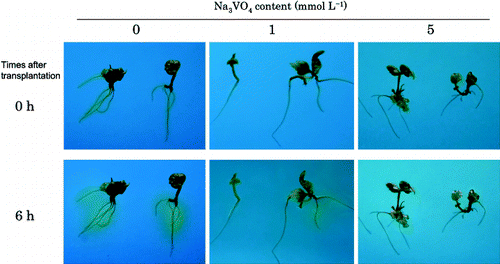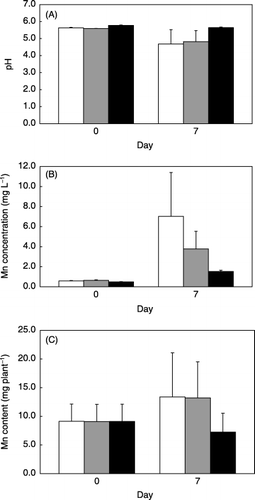Figures & data
Figure 1 Plants regenerated from Chengiopanax sciadophylloides calli. Calli of C. sciadophylloides (A) were induced to asexual embryo formation (B) by 2,4-D content lowering. Asexual embryos, green and white in color (C), were transplanted to the regeneration medium with the green part of the asexual embryos above the medium (D). Leaves and roots were produced from the green and white part of the asexual embryo, respectively (E). Size bars in A–E indicate 1 mm, 1 mm, 1 mm, 3 mm and 5 mm, respectively.

Figure 2 MnO2 solubilization of the medium by regenerated Chengiopanax sciadophylloides plants (A,C) and continuity of the pH lowering (B,D). Data are expressed as the mean ± standard deviation of four replicates.

Figure 3 Increase in Mn concentration in regenerated plants. The above-ground parts of the regenerated plants used for investigation of continuous MnO2 solubilization and pH lowering of medium (see Fig. 2C,D) were analyzed. Data are expressed as the mean ± standard deviation of four replicates.

Figure 4 Effects of pH adjustment of the culture medium on MnO2 solubilization. Portions of culture medium with no plants (□) and after removal of regenerated plants (▪) were adjusted to pH 5.3, and the activity of MnO2 solubilization was investigated by measuring the Mn concentration increase over 1 week. Data are expressed as the mean ± standard deviation of four replicates.


